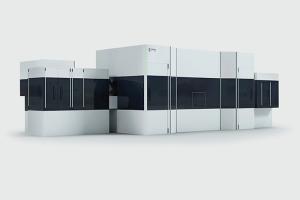Generator system solves power and reporting challenges
Tift Regional Medical Center (TRMC), Tifton, Ga., developed from humble beginnings when it opened as a general hospital in 1965. Fifty years and multiple expansions later, the facility now offers a full line of specialty medical services.
Located on the main campus of Tift Regional Health System, which serves southern Georgia, 191-bed TRMC is the largest employer in Tift County with more than 125 physicians in 30 specialties. They include oncology, cardiovascular, radiology, neurodiagnostics, geriatric psychology, women’s health services and more.
To ensure that the campus has a continuous supply of power even in an emergency, TRMC needed to boost its emergency backup power to meet the requirements of life-safety systems and other essential operations as well as meet Joint Commission requirements to maintain accreditation.
“Operating solely on 1-megawatt (MW) and 600-kilowatt (kW) generator sets, we were at our capacity and required an additional reliable backup power source,” says Don Gay, director of facility, engineering and safety management for the health system.
TRMC worked with Yancey Power Systems, a local Caterpillar dealer, to develop a customized standby power solution. The new system runs on an additional diesel generator set with upgraded paralleling switchgear to control the three generators, including the existing 1 MW and 600 kW units. Together, the three units provide 2.6 MW of backup power.
“Due to the service experience of our technicians, the transition was made with minimal risk to the hospital and maintained uptime of the backup power while seamlessly modifying the controls and testing the equipment,” says Danny Barber, aftermarket sales manager, Caterpillar Switchgear.
TRMC’s needs went beyond standby emergency power because the existing backup power equipment was not capable of providing thorough and accurate computer-generated reports.
A Joint Commission-accredited health care facility must provide documentation of conducting monthly tests to show that the generators produce a nominal 30 percent load for 30 minutes. The second option is to operate a load bank once a year with resistive loads.
Because the equipment test reports were handwritten, TRMC facility staff had no way of verifying the load testing to Joint Commission inspectors, says Robert Setters, plant operations manager, TRMC.
“We were accustomed to working off of handwritten reports during a time when software-generated reports of run times and power loads were the standard,” he says.
In addition to the new generator, Caterpillar installed new controls and reporting software, all of which combine to meet Joint Commission standards for minimum power load and duration requirements as well as reporting requirements, Setters says.
“While a logbook is still an accepted means of recording tests, an automatically generated report by the monitoring system gives a high level of accountability to the operator,” he says.
To feed additional power loads to the growing hospital, an automatic transfer switch (ATS) solution was installed during the process. It redirects power between main and backup sources and offers improved control for continuous power and continued safety.
The system software also was replaced with an upgraded program that provided positioning, run requests, run times for ATS and real-time reporting on all generator sets. Setters calls the reporting feature that provides data from the generators as well as the ATS switches the “real star of the show.”
The new system is more cost-effective, too. “The electronic reporting saves us approximately $4,000 a year, which should be doubled for the two consecutive years that load banking does not need to be done. So, that’s $8,000 in immediate savings right off the top,” Setters says. // By Jeff Ferenc
COMPLIANCE CHALLENGE
HOSPITAL // Tift Regional Medical Center, Tifton, Ga.
NEED // Increase emergency backup power to meet Joint Commission requirements
SOLUTION // Caterpillar diesel generator with new reporting software




